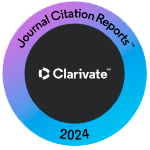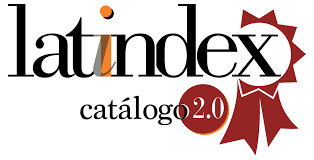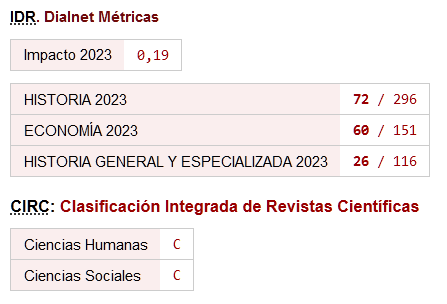Accounting records in the books of factory of the cathedral of Segovia during its building: 1524-1685
DOI:
https://doi.org/10.26784/issn.1886-1881.v5i9.149Keywords:
Church accounting, Charge and Discharge method, cathedral of SegoviaAbstract
The accounting history research presented here has been carried out at the Archive of the Cathedral of Segovia and covers the period in which it was built, that is between the years 1524 and 1685. According to their contents and importance, the accounting documents found at the above mentioned archive have been sorted into two categories: Main books and Auxiliary books. We call Main books those kept to record the general accounts of the financing and expenditure of the works of construction of the building of the Segovia Cathedral. They were periodically presented to the approval of the bishop. The office responsible for keeping all account books and, in general, for the administration of the income of the Cathedral was called “Fábrica”, that is, Factory. The Auxiliary books were used as daily registers to record in detail the different operations carried out by the administrators. They were the documentary basis for the later elaboration of the Main books. The Auxiliary books received different names, according to the type of operations -collections and payments basically- registered on them.
First of all, we analyze in this article the contents of each type of Auxiliary books still remaining in the archive of the cathedral. By doing it, we observe some practices taken over afterwards by double-entry bookkeeping, such as the use of two opposed pages to record respectively the debit side (Debe) and the credit side (Adeaver). Then, we proceed to the study in accounting terms of the Main books of the cathedral. They were kept following the Charge and Discharge method. Finally, we describe in detail the system that the “Fabrica” of the Segovia Cathedral had implemented to keep its records. It was a pure Charge and Discharge method, although the Auxiliary books show some practices and terms used by double-entry bookkeeping.
Downloads
References
Aldea Vaquero, Q. (1973): Diccionario de Historia Eclesiástica de España, Consejo Superior de Investigaciones Científicas, Madrid, 5 vols.
Barrio Gozalo, M. (1982): Estudio socio-económico de la iglesia de Segovia en el siglo XVIII, Caja de Ahorros y Monte de Piedad, Segovia.
Barrio Gozalo, M. (1983): "Los diezmos y primicias en la diócesis de Segovia en el siglo XVIII", Cuadernos de investigación histórica, nº 7, Madrid, pp. 133-146.
Calvo Cruz, M. (2000): La contabilidad de los espolios y vacantes: diócesis de Canarias (1753 -1851), Servicio de publicaciones de la Universidad de Las Palmas de Gran Canaria.
Calvo Cruz, M. , (2005): "Rendición de cuentas de los administradores del obispado en sede vacante en España, siglos XVIII-XIX", Revista de Contabilidad, vol. 8, nº 15, Asociación Española de Prof. Universitarios de Contab., Bilbao, pp. 169-182.
Calvo Cruz, M. y Castro Pérez, C. (2005): "El Mayordomo y la contabilidad parroquial. Control y rendición de cuentas. Villa de Agüimes 1730-1830", De Computis, nº 3, diciembre, pp. 4-32.
https://doi.org/10.26784/issn.1886-1881.v2i3.213
Calvo Cruz, M., Castro Pérez, C. y Granado Suárez, S. (2007): "Análisis de una defunción en los siglos XVII-XVIII a través de las anotaciones contables que realizaba el colector parroquial", Tiempos Modernos Revista de Historia Moderna, nº 15.
Diaz-Miguel, Mª D. (1968): "Relación de Juan Rodríguez, fabriquero mayor de la catedral de Segovia", Estudios Segovianos, vol. XX, Segovia, pp. 215-229.
Donoso Anes, R. (2005): "Estado actual de la investigación en historia de la contabilidad", Revista de Contabilidad, vol. 8, nº 15, Asociación Española de Profesores Universitarios de Contabilidad, Bilbao, pp. 19-44.
Fatjó Gómez, P. (1999): "Organización y gestión de una hacienda eclesiástica en la Cataluña del siglo XVII: la catedral de Barcelona", Revista de Historia Económica , año 17, nº 1, pp. 89-118.
https://doi.org/10.1017/S0212610900007588
García y García-Estévez, Á. (1998): "Episcopologio de la Diócesis de Segovia. Noticias de los Obispos de Segovia desde sus orígenes hasta nuestros días", Estudios Segovianos, vol. XL, Segovia, pp. 177- 346.
García Sanz, Á. (1985): "Cómo se financió la construcción de la catedral de Segovia", Estudios Segovianos, vol. XXIX, Segovia, pp. 181-230.
Gutiérrez, J. (1569): Arte breve y muy provechosa de cuenta castellana y aritmética, donde se demuestran las cinco reglas de guarismo por la cuenta castellana, y reglas de memoria, Miguel de Suelves infanzón, Zaragoza.
Hernández Borreguero, J.J. y Donoso Anes, R. (2001): "El Sistema Administrativo y Contable de los Diezmos de la Diócesis de Sevilla en el siglo XVII", III Encuentro de Trabajo sobre Historia de la Contabilidad, Santo Domingo de Silos.
Hernández Borreguero, J.J. (2007); "Impuestos sobre la renta de los eclesiásticos: el Subsidio y Excusado (Diócesis de Sevilla, mediados del siglo XVII), De Computis; nº 7, diciembre, pp. 80-99.
https://doi.org/10.26784/issn.1886-1881.v4i7.172
Hernández Esteve, E. (2005): "Un lustro de investigación histórico-contable en España (2001-2005)", Revista de Contabilidad, vol. 8, nº 15, Asociación Española de Profesores Universitarios de Contabilidad, Bilbao, pp. 45-94.
Hernández Esteve, E. (2007): Doctor Luís Pérez Pardo - El geógrafo . Collecció Homenatges, Universitat de Barcelona, Barcelona.
Latorre Ciria, J. (1992): Economía y Religión. Catedral de Huesca. Rentas y Distribución Social (Siglos XVI-XVII), Institución Fernando el Católico e Instituto de Estudios Altoaragoneses, Zaragoza- Huesca.
Solórzano, B. S. de (1590): Libro de caxa y manual de cuentas de mercaderes y otras personas, con la declaración dellos, Madrid, Pedro Madrigal, ed. de Esteban Hernández Estebe, Instituto de Contabilidad y Auditoría de Cuentas, 1990, Madrid.
Teruel Gregorio de Tejada, M. (1993): Vocabulario básico de la historia de la Iglesia, Crítica, Barcelona.
Villaluenga de Gracia, S. (2001): "La administración del patrimonio capitular de la catedral de Toledo en el siglo XVI", XI Congreso AECA, Madrid.
Villaluenga de Gracia, S. (2005): "La aparición de la partida doble en la Iglesia: el diario y mayores de la catedral de Toledo, 1535- 1539", De Computis, nº 3, diciembre, pp. 147-216.
Downloads
Published
How to Cite
Issue
Section
License
Copyright (c) 2023 Miguel Ángel Cillanueva de Santos

This work is licensed under a Creative Commons Attribution-NonCommercial-ShareAlike 4.0 International License.














